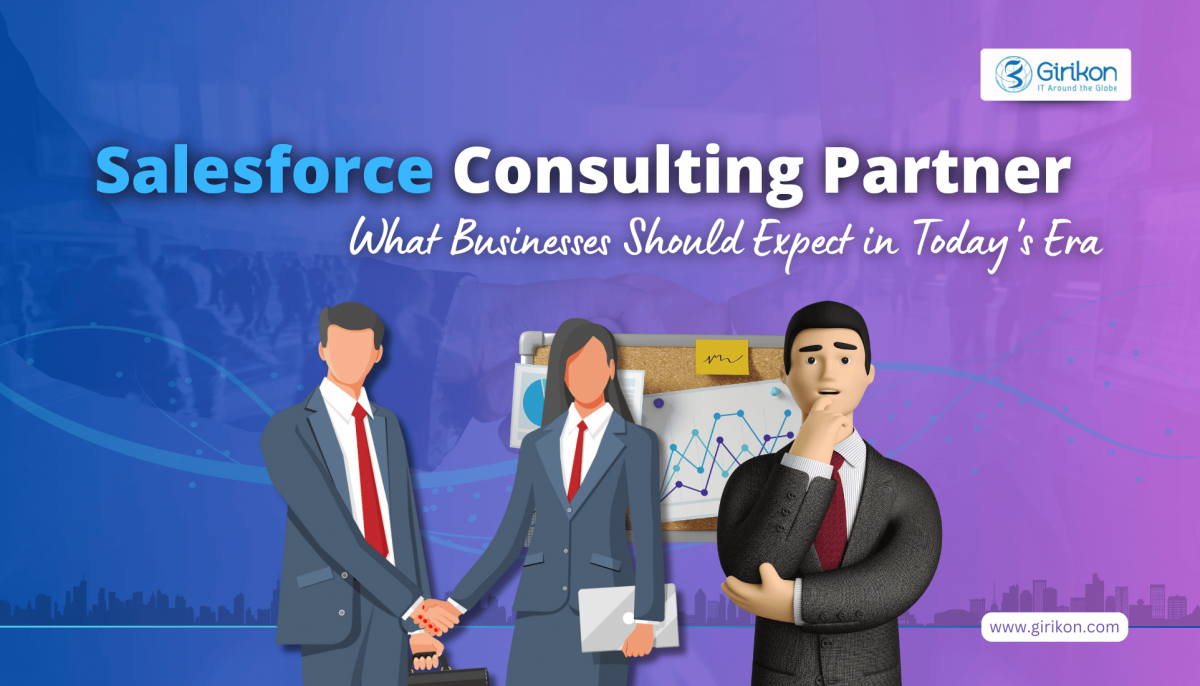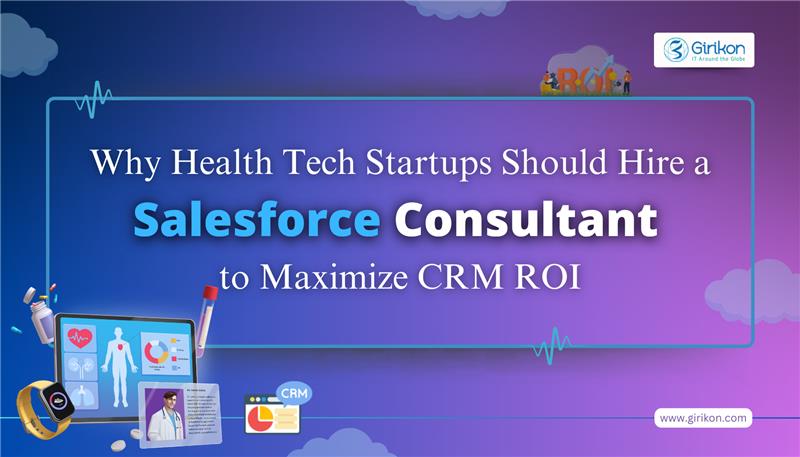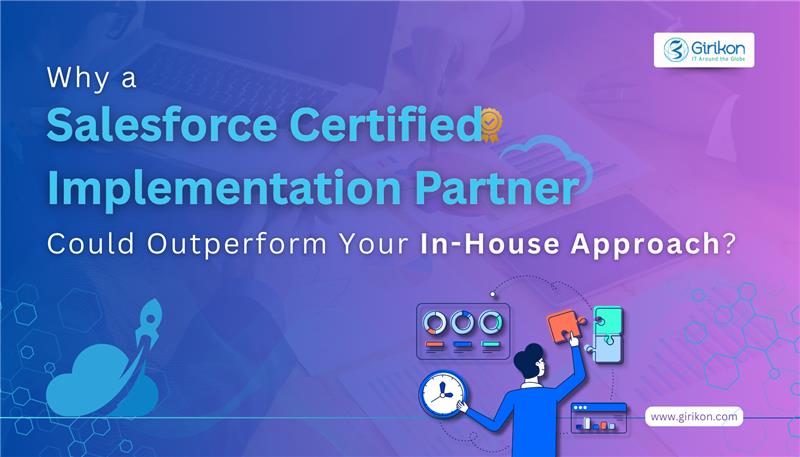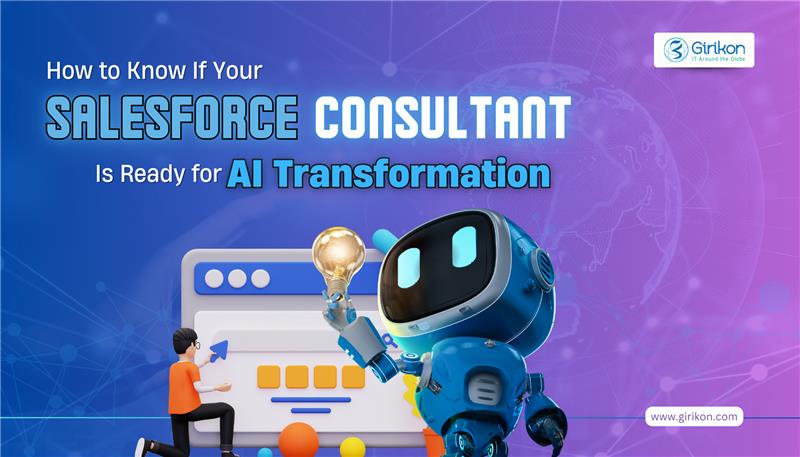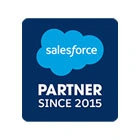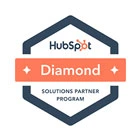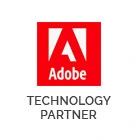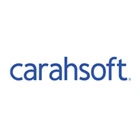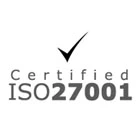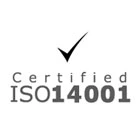The success of any software implementation depends on the user adoption rate. In any organization, a new system is implemented for the betterment of its employees as the new system eliminate some or all redundant process, manual efforts.
Well, it is not necessary that the newly implemented system does the above-mentioned work. In short, it helps in boosting the employees’ efficiency.
The same goes for Salesforce Implementation . If your employees’ are not used to Salesforce environment, then it will be quite difficult for the users to adopt the system and work on it on the daily basis.
“There are innumerable reasons determining why users are not adopting a new system. In the below segment we will be discussing those factors and solution for solving them and getting more and more users onboard.
Training Sessions for the End Users:
It is important to provide full-fledged training, especially to the immediate end users before switching to a new Salesforce solution. Video, tutorial, live demo, webinars on UAT Mode proves to be quite beneficial and helps a lot in adapting.
One can also provide customized training for different users depending on their permission, groups. When the employees attend the training, they share their doubts, feedback about the solution which in turn helps in making the solution even better for the employees.
Prepare the End-users:
It is important to keep your users notified that a new system will be introduced to them for their daily work. You can do this 1 month or 15 days prior to the implementation depending upon the system.
You can start with pamphlets, newsletters, etc., and as the implementation day approaches you can organize one to one training so that user adoption is smooth and the user will also not find that hard to settle with the new system.
User Manual for the users:
It is a good practice to provide User Documentation of newly developed system so that the end users can refer that document whenever they get stuck. User manual with system images gives more clarity and helps the end users to find the solution easily.
Realize your users the need of new system:
It is vital to explain the need for introducing a new Salesforce solution to the end users and what benefit can one achieve from the new solution so that the adoption is less complex.
Implement the new system in sync with the existing business flow so that the users can understand it and find it not hard to adapt it.
Provide support to the end users after implementation:
After the implementation, provide hands-on training to the users and resolve all the queries asked by the users. Sometime, a user may get confused by seeing new user interface may end up asking minor questions. All you have to do is be patient and answer all the questions asked and show them how to achieve it.
That’s all for this article, in case you need a Salesforce Consultant , Salesforce Implementation Partner or Salesforce Development Services then please feel free to reach out to us at sales@girikon.com
Girikon is a one-stop destination for Salesforce Development related work having its offices in USA, Australia and India
Salesforce Einstein Vision
-
December 24, 2018
-
Uditi Jain
The true potential of image recognition has been utilised by Salesforce Einstein.
Isn’t exceptional if we have something that categorises customer into similar groups by filtering keywords in customer reviews and other media to group related cases and assign
them to the accountable customer service executive. It will enhance customers service process leaving high customer satisfaction rate.
With the adoption of image recognition, the business can better understand customer preferences and lifestyle through their social media images and their other actions.
This is achievable with Salesforce Einstein Vision and its ability to recognise the image. Now, the user can leverage pre-trained classifiers such as food, picture, general or multi-label images in any app with just a few clicks.
Einstein vision makes it possible by creating API learning models for every possible use case that include visual search, brand detection, and object identification. It also works on signature prediction, Salesforce Einstein Vision API helps to upload signature image data sets in the Einstein Platform Service Account, train datasets and classify a signature image to get the Einstein prediction result. A Salesforce Consultants are doing best to map the business need with Salesforce Einstein peculiarities.
Salesforce has also introducing Einstein Vision for Social Studio, delivering AI-powered image recognition directly within Marketing Cloud’s social media marketing solution. Now, marketers can automate the discovery and identification of images, and respond appropriately. By understanding the photos that consumers post, marketers are empowered to reach consumers even when they have not specifically mentioned a brand, product or service by name.
Einstein Vision is designed using Salesforce Research’s computer vision discoveries and has created a simplified solution for all the complexities of AI for customers. This advances image recognition are making help towards success in a new era by enabling companies to discover insights about customers and predict consequences that lead to intelligent arrangements. The power of AI will be implemented in the Salesforce Community and we all are excited to see the power of AI in CRM.
Girikon as a Salesforce Consulting Partner has implemented Salesforce Einstein Vision making businesses develop and achieve a tremendous level of customer satisfaction.
Salesforce Einstien is Salesforce CRM infused with artificial intelligence to provide better insight about the data to the marketing and sales departments.
Salesforce Einstein is backed with Deep Learning, predictive analytics, natural language processing, Machine Learning, and smart data discovery.
Each version of Einstein is customized as per the customer. The model learns by its own and behaves as per every interaction and data.
Image Courtesy: Trailhead
Einstein Voice was introduced at Dreamforce ’18 event. Einstein Voice consists of two products- Einstein Voice Assistant and Einstein Voice Bots.
Einstein Voice Assistant will enable the sales rep to verbally log (record) the meeting notes, updates about the meeting, any fresh idea or new lead into the Salesforce mobile app.
Now each time a sales rep gets any new data or need to update anything related to their associated records in the Salesforce then instead of texting or manually updating the information, he can just use Einstein Voice Assistant to update the record or log new piece of information.
Image Courtesy: Trailhead
On the other hand, Einstein Voice Bot allows the customers to build their own voice-activated assistant and customize for their company.
Clearly, Einstein Voice will change the data entry game forever and allow the sales resp to capture more leads and close them on time leading to more business for their company. These voice bots can be used on Google Home, Alexa devices and other voice platforms as well.
Normally a sales rep’s day starts mail checking, putting reminders of things which needs to be achieved through the day, upcoming meetings. Now with Salesforce Einstein Voice, a sales rep can start the day with voice-activated details about upcoming meetings and tasks with the help of smart speakers or phone’s speaker.
A sales rep can record notes in the Salesforce mobile app by talking to their mobile device while driving or on the go. Einstein Voice with the help of AI can also automatically analyze the captured notes and relate the keywords like name, company name to the associated records like opportunities, accounts, contacts.
After relating to the associated records, it will also suggest follow-up tasks linked with the new updates so that the sales rep can close the deal.
Image Courtesy: Trailhead
Apart from capturing meeting notes, Einstein can open and review any Salesforce dashboard and display reports. It can also share meeting knowledge with the participants of the meeting.
Let’s hope that Einstein Voice helps in improving customer services and taking it to the next level. Here at Girikon, we have worked with Salesforce Einstein and delivered several projects successfully. In case you need any assistance in the Salesforce Implementation or Salesforce Einstein then please feel free to reach out to us at sales@girikon.com
You can also Check Salesforce Consulting Services
In the early 90s and 2000s, customer service was about face to face communication, emails, and telephone contact. After the arrival of the Internet of Things (IoT), the face of customer service changed for good.
Let’s get into the nitty-gritty detail to know what Internet of Things (IoT) is. Internet of Things (IoT) is the network of physical devices, vehicles, home appliances, and other software items which are connected to the internet and enables these devices to connect, collect and behave as per the surrounding environments using embedded sensors, processors and communication hardware.
With the evolution of CRM, smartphones and cloud-based application Internet of Things is growing and becoming stronger day by day.
Haven’t we all imagined a smart home where lights are turned on automatically as you enter home. At morning when you get up, your favorite music starts and an automatic kitchen where the coffee pot starts brewing when you come out of the washroom.
The above things seemed like a science fantasy movie a few years back but thanks to the Internet of Things (IoT), now these all are possible. All the home appliances, smart devices are connected and communicate with each other which makes this wonder happen.
If the Internet of Things (IoT) add magic into your day to day life then just imagine the benefits it will bring into the customer service sector. According to a report of Gartner, 8.4 billion connected things will be in use worldwide in 2017, up 31 percent from 2016, and will reach 20.4 billion by 2020.
IoT also makes machine smart. Smart products can identify faults, communicate with the technical support and initiate actions to resolve them. All this happens before your customer is even aware of the issue.
With the help of Salesforce IoT, your support team can easily track the actual usage and new opportunities emerge from that data. Before that, you have to find out useful IoT data for your business. Now with the help of Salesforce IoT, you can actually create program based on your own idea with minimal coding in the Lightning Platform.
After implementing IoT for your business, it is really important to organize and manage volumes of data. A small volume of data can be managed easily but if you have a large volume of data we have another solution called Einstein.
Einstein will assist you with data on how to manage it and based on the activities and trends. For example, it will assign data to the team to solve an issue, flag them as per the requirement.
That’s all folks for today. That’s all for this article, in case you require Salesforce Implementation Partners or Salesforce IoT expert, then please feel free to reach out to us at sales@girikon.com
With the progression in technology, business practices are shifting more towards automation.
#1 CRM, Salesforce is also packed with automated marketing component named Salesforce Marketing Cloud which is a platform for marketers that allows them to create and manage relationships with customers.
The Marketing Cloud consolidates integrated solutions for customer journey management, email, mobile, social media, web personalization, advertising, content creation, content management and data analysis. The business user can make predictive analytics to help make decisions such as, which is the best communication channel as per user response. It is endowed with a component called Journey Builder that helps marketers tailor campaigns to customer behavior and specifications, demographics and transmission channel choices.
The business user can take benefit of event-driven triggers to initiate actions like when a customer joins any new program, a trigger runs in the background to send a welcome message, other events could trigger data updates in the customer contact record.
The Marketing Cloud is also connected to Salesforce.com’s Sales Cloud and Service Cloud , which concedes coordination that produces a unified experience and prevents customers from being reached separately by marketers from all three groups.
The key characteristics of the Marketing Cloud include
➤ Messaging(Email / SMS) at every step of the customer journey, keeping the customer updated and involved within the process.
➤ Drag-and-drop segmentation makes the job easy for all type of users.
➤ 1:1 content personalization ensures customer specific content.
➤ CRM and cross-channel integration with external platforms make process management sound.
➤ A/B and random-split testing.
➤ Lead capture automatically via various sources capturing relevant details.
➤ Comprehensive, real-time tracking and reporting of the Organization progress.
➤ Pre-built templates and themes for better customer engagement.
Practicing Marketing cloud to manage marketing tasks takes organization brand to a different level, we as Salesforce Marketing Cloud Partner ensures following best practices to achieve the maximum throughput.
Salesforce is very handy in terms of integrating it with different platforms. It has allowed various platforms to sync resulting in enhanced user experience.
This package is also an integrated package resulting in an outstanding outcome. This package utilises Twilio API to enable direct SMS from Salesforce as more than 50% prospects prefer SMS over emails.
This package is developed on the Salesforce platform, allowing scheduling of Single / Bulk SMS / MMS campaigns from Objects and Reports. It empowers organisations to reach out to more customers quicker with Salesforce via scheduling features that use workflows to send the customised customer-specific messages.
The features of this package include,
● Individual & Bulk SMS / MMS
● Customised email template
● Interactive Chat window
● SMS notification on email
● Schedule SMS / MMS on the weekly/monthly basis
● SMS from Reports
● SMS History
● SMS usage tracking
● SMS OptOut feature
The user can create customizable SMS templates with dynamic field values and interactive emojis that give users an individual touch and allows tracking of all the SMS sent to their customers that provides a consolidated repository of SMS activities.
The businesses can keep the record of SMS usage in a graphical arrangement determining Outgoing SMS, Incoming SMS, etc.
A lot of business users work on the Salesforce CRM. If you are a Salesforce admin then it is important to create a system which eases the process of adding leads, working on the opportunity, creating reports, etc. Small factors, proper display of primary fields which needs attention if taken care can lead to a smooth & glitch-free system.

 +1-480-382-1320
+1-480-382-1320 +44-7428758945
+44-7428758945 +61-1300-332-888
+61-1300-332-888 +91 9811400594
+91 9811400594